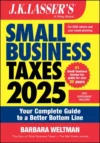Tax Gap
According to a Treasury report (https://home.treasury.gov/system/files/136/The-American-Families-Plan-Tax-Compliance-Agenda.pdf), the tax gap, which is the spread between what the federal government collects in taxes and what it thinks it should be collecting, continues to grow. The tax gap is now estimated to be $584 billion, which is about 3% of GDP each year in owed but uncollected taxes. The tax gap could rise to $7 trillion over the next decade if it isn’t addressed.
The tax gap results from:
- Non-filing by those who should file returns. This accounts for about 9% of the tax gap.
- Underreporting of income and overstating deductions. This accounts for 80% of the tax gap.
- Nonpayment. This accounts for about 11% of the tax gap.
The Treasury suggested several ways to increase tax compliance:
- Provide more resources to the IRS so it can increase its audit activities. Specifically, the Treasury suggests increased audits of sophisticated tax evasion by corporations, partnerships, and high-income and high-net worth individuals.
- Increase information reporting to give the IRS more information. This may include new reporting requirements for virtual currency transactions.
- Overhaul outdated technology to help the IRS identify tax evasion and serve customers. This would help the IRS be more efficient in handling payments to taxpayers, such as the advance child tax credit that begins in July.
- Regulate paid tax return preparers. This would include increasing penalties for those who commit or abet tax evasion.
Fiduciary
A person or corporation such as a trustee, executor, or guardian who manages property for another person.



